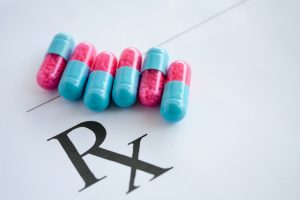
Aminoglycosides are commonly used as a lifesaving treatment for many serious diseases. But the effectiveness of this class of antibiotics comes with a price, which is a high risk of hearing loss. It is estimated that 20 to 60 percent of patients who take the antibiotic will experience hearing loss.
Researchers at Stanford University School of Medicine reported that they have developed a modified version of an aminoglycoside to help eliminate the risk of hearing loss. Co-senior author Anthony Ricci said, “If we can eventually prevent people from going deaf from taking these antibiotics, in my mind, we will have been successful. Our goal is to replace the existing aminoglycosides with ones that aren’t toxic.”
The modified drug known as N1MS took four years in the making. It is derived from sisomicin, which is a type of aminoglycoside. N1MS was found to successfully treat urinary tract infections in mice without causing deafness.
Co-senior author Alan Cheng added, “As a clinician-scientist, I treat kids with hearing loss. When a drug causes hearing loss it is devastating, and it’s especially disturbing when this happens to a young child as they rely on hearing to acquire speech. When I came to Stanford seven years ago from the University of Washington, I was exploring the angle that maybe we could add drugs to protect the ear from toxicity. Tony [Anthony Ricci] brought up this new idea: Why don’t we just not let the drug get in? Great idea, I thought. When do we start to work?”
Aminoglycosides are a popular treatment because of they don’t cost much, don’t require refrigeration, and are effective in treating bacterial infections. But, unfortunately, they come with a necessary evil everyone has come to accept, which is toxicity that can yield serious side effects, including hearing loss.
Ricci explained, “We targeted sites on the drug molecule that were not involved in the antimicrobial activity that kills off infection. This allowed us to reduce toxicity to the ear while retaining antimicrobial action.”
The researchers made nine different compounds derived from sisomicin. When tested in the lab setting, all of them proved to be less toxic to hair cells of the inner ear. Three of the nine were just effective as sisomicin, and of those three, N1MS was most effective at killing bacteria.
Ricci added, “We postulate that entry into kidney cells is also through a channel, and so entry is reduced here as well… It is speculation at this point because unlike with the hair cell, we have not measured drug entry into the kidney cells, but it seems reasonable.”
Treatment for hearing loss
We can’t turn back time and change the age-related process that leads to hearing loss, but there are some steps we can take to prevent a certain degree of hearing impairment. For instance, we can avoid excessive noise during leisure time, we can wear special ear protection if we work in a noisy factory, and we can live a healthy lifestyle, including exercising, eating fresh foods, and not smoking.
Hearing aids can be very helpful for those who are experiencing hearing loss and the frustration that comes with it. Hearing aid development has come a long way over the years, and the devices are now available in various sizes and colors. In many cases, you can’t tell a person is even wearing a hearing aid.
Some people don’t need a hearing aid. In many cases, clearing excess wax from the ear can improve hearing, or dealing with allergies that can cause ears to plug can improve your ability to hear.
If you find you are struggling to hear, don’t hesitate to approach a health care professional. They will administer some simple hearing tests to find out the degree of your hearing impairment.